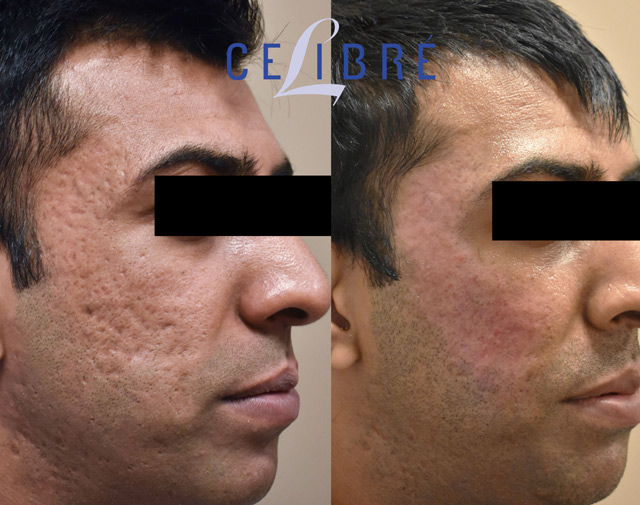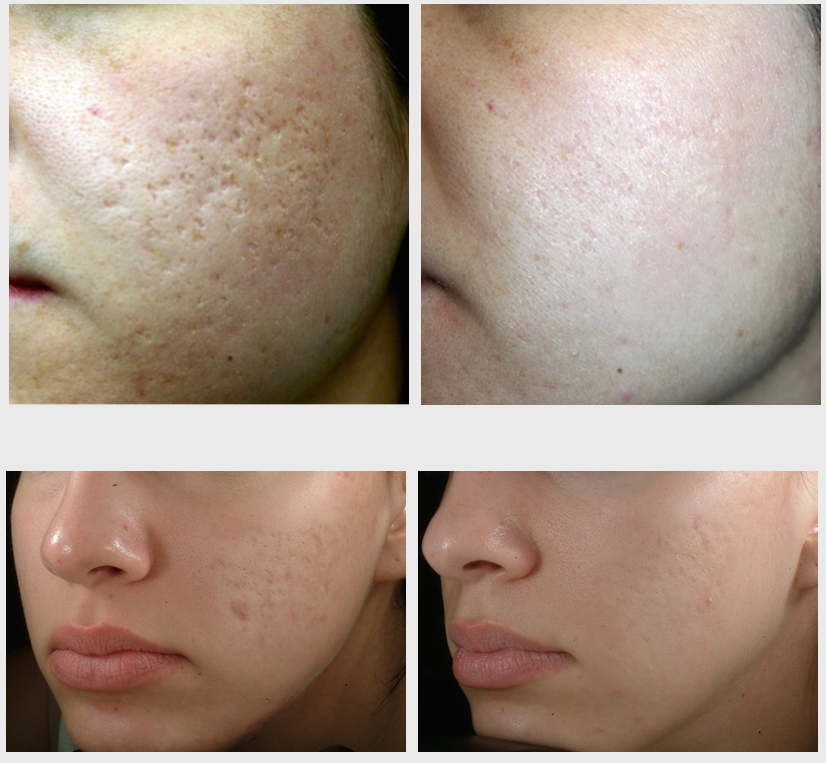Acne and Acne Scars Treatment: Professional Solutions for Lasting Results
Acne and Acne Scars Treatment: Professional Solutions for Lasting Results
Blog Article
Checking Out Skin Problem: Dealing With and recognizing Acne Scars for Healthier Skin
Acne marks represent a substantial issue for individuals seeking to keep healthy and balanced skin, as they can impact both look and self-confidence. Understanding the various kinds of scars, from atrophic to hypertrophic, is crucial for identifying proper therapy options. While expert interventions like chemical peels and microneedling can be efficient, the significance of customized care strategies can not be overemphasized. Preventative actions play a crucial function in lessening future scarring. As we check out these elements, one should take into consideration just how the appropriate strategy can cause transformative results.
Comprehending Acne Scars

The body's natural healing procedure can lead to either atrophic scars, which show up as clinical depressions in the skin, or hypertrophic marks, which are raised and result from overproduction of collagen. In addition, the psychological toll of acne scars need to not be taken too lightly; lots of individuals report feelings of embarrassment, stress and anxiety, and reduced self-worth. This psychological problem can influence social interactions and overall high quality of life.
Dealing with acne scars needs a detailed understanding of their formation and influence. Awareness of the potential for lasting repercussions related to neglected scars can motivate individuals to look for appropriate therapies. Early treatment and efficient management techniques can dramatically improve skin appearance and enhance emotional durability, stressing the importance of recognizing the complexities surrounding acne marks.
Kinds Of Acne Scars
Acne marks can be categorized into unique kinds, each exhibiting one-of-a-kind features and needing certain treatment techniques. acne treatment for sensitive skin. The primary types of acne scars consist of atrophic, hypertrophic, and keloid scars

Hypertrophic scars, on the other hand, are elevated above the skin level and are the outcome of too much collagen manufacturing throughout the healing process. They typically stay within the boundaries of the initial acne sore. Keloid marks are comparable however prolong beyond the initial injury site, creating bigger, increased areas that can be scratchy or agonizing.
Understanding these kinds of scars is essential for picking ideal therapy alternatives. Various marks might react better to details treatments, such as laser treatments, fillers, or medical interventions, stressing the value of a tailored approach to acne scar management.
Identifying Your Scars
Acne marks usually drop into two categories: hypertrophic and atrophic scars. These can better be identified into ice-pick marks, boxcar scars, and rolling marks, each displaying unique attributes and requiring various methods for analysis.
Hypertrophic marks, on the other hand, are increased and occur because of extreme collagen manufacturing throughout the recovery procedure. Identifying the particular features of your scars-- such as size, texture, and deepness-- is essential for appropriate identification (skin rejuvenation treatments). Furthermore, think about the circulation of marks across your skin, as this can show the intensity and period of the acne problem
Engaging with a dermatologist can give important understandings right into the nature of your scars, helping in the differentiation between different types. A detailed understanding of your marks will ultimately lead to a more customized and effective treatment strategy, ensuring a more clear and much healthier complexion.
Therapy Alternatives Readily Available
Determining the certain type of acne scars present on your skin lays the foundation for checking out efficient treatment choices. Typical kinds of acne scars include atrophic (clinically depressed), hypertrophic (increased), and post-inflammatory erythema.
For atrophic scars, choices such as chemical peels, microneedling, and laser resurfacing are widely utilized. Chemical peels off make use of acids to eliminate the external layer of skin, advertising new cell development. Microneedling includes small needles that create micro-injuries, promoting collagen manufacturing. Laser resurfacing targets damaged skin cells, enhancing texture and tone.
Hypertrophic marks can be treated with corticosteroid injections to flatten the mark or laser treatment to decrease inflammation and improve appearance. Silicone gel sheets and stress dressings might also assist in handling elevated scars.
On top of that, facial fillers can momentarily complete clinical depressions from atrophic scars, while medical excision might be suitable for severe cases. Each treatment choice has its factors to consider and benefits, making it vital to seek advice from a skin specialist. They can offer individualized recommendations based upon the type and intensity of your scars, as well as your skin type and overall health.
Tips for Avoidance
Effective avoidance strategies can dramatically reduce the probability of developing acne marks. The first step is to keep a constant skin care regimen that consists of mild cleaning, peeling, and hydrating. Making use of non-comedogenic products helps avoid stopped up pores, which can exacerbate acne. Furthermore, integrating topical therapies having salicylic acid or benzoyl peroxide can properly minimize and manage outbreaks swelling.
Staying clear of need to pick or pop acne lesions is crucial, as this can result in much deeper skin damage and enhance the danger of scarring. Instead, consider utilizing a cool compress or over-the-counter therapies to decrease swelling and soreness.
Sunlight security is another crucial element of prevention; ultraviolet (UV) rays can darken scars and impede the healing procedure. Using a broad-spectrum sunscreen with at the very least SPF 30 daily can shield the skin and advertise even healing.
Last but not least, maintaining a balanced diet plan rich in vitamins, antioxidants, and minerals sustains skin health and wellness and recovery. Remaining hydrated and handling tension levels can likewise play a considerable duty in minimizing acne flare-ups. By carrying out these approaches, people can significantly reduce their possibilities of developing acne scars.
Conclusion
In verdict, understanding and identifying acne marks is vital for effective treatment and accomplishing much healthier skin. Numerous kinds of acne marks, including atrophic and hypertrophic scars, necessitate particular treatments customized to specific needs. Therapy options variety from chemical peels and microneedling to corticosteroid injections, stressing the value of consulting a skin specialist. Additionally, embracing a gentle skincare routine and securing the skin from UV direct exposure can dramatically add to the avoidance of more scarring and overall skin health and wellness.
The body's natural recovery process can result in either atrophic marks, which show up as anxieties in the skin, or hypertrophic marks, which are increased and result from overflow of collagen. They are additional divided right into three subtypes: ice choice scars, boxcar marks, acne treatment for sensitive skin and rolling marks. Acne scars generally fall right into two classifications: hypertrophic and atrophic marks. These can better be classified right into ice-pick marks, boxcar marks, and rolling scars, each showing unique features and needing different methods for assessment.
Various types of acne scars, including atrophic and hypertrophic marks, demand details treatments tailored to private requirements.
Report this page